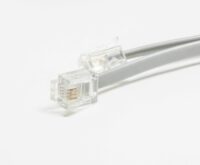The Unseen Signals: How We’re Using Big Data to Forecast the Next Global Health Crisis
Remember the early days of 2020? That creeping sense of dread, the firehose of confusing information, and the feeling that the world was changing in real-time, right before our eyes. We all felt blindsided. But what if we weren’t? What if the clues were there all along, hidden in plain sight within the massive, chaotic torrent of global data? The truth is, the science of predicting pandemics is no longer science fiction. It’s a complex, data-driven reality, and it’s our best shot at never being caught so completely off guard again. This isn’t about a crystal ball; it’s about listening to the planet’s digital heartbeat.
Key Takeaways
- More Than Just Health Records: Pandemic prediction leverages unconventional data sources like flight patterns, social media sentiment, search engine trends, and even satellite imagery.
- AI as a Digital Epidemiologist: Machine learning algorithms can detect faint, anomalous patterns in massive datasets that would be invisible to human analysts, providing crucial early warnings.
- Data Variety is Key: The power of big data in this field comes from combining different types of information—like clinical data with mobility data—to create a more complete picture of a potential outbreak.
- Ethical Hurdles are Significant: While powerful, the use of big data for public health raises critical questions about privacy, data bias, and the potential for misuse that must be addressed.
First, What Are We Even Talking About? Demystifying ‘Big Data’
Let’s be honest, “big data” has become one of those buzzwords that gets thrown around so much it’s almost lost its meaning. It sounds impressive, but what is it, really? In the context of public health, it’s not just about having *more* data. It’s about data that has a few specific characteristics, often called the “V’s”.
Volume
This is the most obvious one. We’re talking about an unimaginable amount of information. Think about every single tweet, every Google search, every credit card transaction, every hospital admission, every genetic sequence uploaded to a database. It’s petabytes and exabytes of data generated every single day. Trying to analyze this with a simple spreadsheet is like trying to empty the ocean with a teaspoon. It’s just not going to happen.
Velocity
This data isn’t just big; it’s fast. It’s generated in real-time. A news report of an unusual illness in a remote village, a spike in tweets about “fever and cough” from a specific city, a sudden surge in online sales of thermometers. The speed at which this information arrives is both a challenge and an incredible opportunity. An outbreak doesn’t wait for a weekly report. To be effective, our systems have to analyze data as it happens.
Variety
This might be the most important ‘V’ for pandemic prediction. The data comes in all shapes and sizes. You have structured data, like neatly organized electronic health records or flight manifests. But you also have a mountain of unstructured data: doctors’ handwritten notes, news articles, social media posts, satellite images of deforestation (which can impact animal-to-human virus transmission). The magic happens when we can combine these wildly different sources to tell a single, coherent story.
Veracity
How much can we trust the data? This is the million-dollar question. Social media is filled with misinformation. Search trends can be skewed by news cycles. A diagnostic code might be entered incorrectly. A huge part of the work in big data analytics is cleaning the data, verifying its source, and understanding its potential biases. It’s about separating the signal from the noise.

The Global Digital Breadcrumb Trail: Where the Data Comes From
So, where are epidemiologists and data scientists looking for these early clues? The sources are more varied than you might think. They’re piecing together a mosaic of information from dozens of streams.
Syndromic Surveillance and Health Data
This is the traditional stuff, but on steroids. Instead of waiting for lab-confirmed diagnoses, systems look for pre-diagnostic indicators. This includes things like:
- Emergency room visit logs for specific symptoms.
- Over-the-counter medication sales (e.g., a sudden spike in cough syrup sales).
- School and work absenteeism rates.
- Calls to public health hotlines.
Aggregated and anonymized electronic health records (EHRs) are a goldmine, allowing researchers to see trends develop across large populations without compromising individual identities.
Human Behavior and Sentiment
We, as a society, leave digital footprints everywhere. We are the sensors. Researchers can tap into this collective consciousness to detect changes in behavior and health. Think about Google Flu Trends, one of the earliest pioneers in this space. It wasn’t perfect, but it showed that tracking search queries for things like “flu symptoms” or “nearby clinics” could often predict an outbreak weeks before official health reports. Today, this has expanded to analyzing social media platforms like Twitter for mentions of specific symptoms, a practice sometimes called “infoveillance.” It’s about capturing the public’s health-related chatter.
Global Mobility and Environmental Data
A virus doesn’t respect borders. In our hyper-connected world, a disease can be on the other side of the planet in a matter of hours. That’s why mobility data is so crucial. By analyzing anonymized data from:
- Airline ticket sales and flight paths.
- Cell phone location data.
- Public transportation usage.
Models can predict where an outbreak is likely to spread next. This was used extensively during the COVID-19 pandemic to understand the impact of lockdowns and travel restrictions. Add to this environmental data—like satellite imagery showing changes in land use, or climate data that might predict the spread of mosquito-borne illnesses—and the picture becomes even clearer.
The Engine Room: How Big Data is Used for Predicting Pandemics
Okay, so we have all this data. A mountain of it. How do we turn it into something useful? A prediction? A warning? This is where the real technological magic happens, blending epidemiology with cutting-edge computer science.

Building the Digital Canary in the Coal Mine
The first step is creating early warning systems. This is all about anomaly detection. Machine learning models are trained on a baseline of “normal” data—what do typical search trends, medication sales, and social media chatter look like on an average Tuesday in October? The AI then monitors the firehose of real-time data, looking for any deviation from that baseline. A small, statistically significant spike in cough-related search terms in a specific region, coupled with a slight increase in pharmacy sales of fever reducers, might trigger an initial, low-level alert. It’s not a panic button. It’s a flag that tells a human expert, “Hey, you might want to look over here. Something’s a little… off.” Organizations like BlueDot famously used this approach, scanning global news reports in multiple languages to flag the unusual cluster of pneumonia cases in Wuhan before many official bodies did.
Modeling the Blaze, Not Just the Spark
Once an outbreak is detected, the focus shifts from “if” to “where” and “how fast.” This is where predictive modeling comes in. You’ve likely seen these models on the news—the scary-looking charts with branching paths showing potential infection curves. At their core, these are sophisticated mathematical simulations. But big data has supercharged them. Instead of just using basic population estimates, modern models can incorporate:
- Real-time mobility data to see how people are moving between cities and countries.
- Genomic sequencing data to track how a virus is mutating and whether new, more transmissible variants are emerging.
- Behavioral data to understand the public’s adherence to health measures like masking or social distancing.
This allows for much more granular and accurate forecasts. It helps officials answer critical questions: Which hospitals are most likely to be overwhelmed? Where should we deploy limited resources like vaccines or antivirals first? What’s the likely impact of closing schools or restricting travel?
“Predictive models are not a crystal ball. They are a tool for understanding possibilities. By feeding them better, more current data, we turn a blurry guess into a high-resolution map of potential futures, allowing us to choose a better path.”
The Double-Edged Sword: Challenges and Ethical Nightmares
This all sounds incredible, right? A technological shield against the next plague. And it is. But it would be dangerously naive to ignore the serious challenges and ethical tightropes we have to walk.
The Privacy Paradox
Let’s be blunt: much of this data is deeply personal. Your health history, your location, your online searches. To be effective, these systems need access to vast amounts of information, but this creates a massive privacy risk. The key is aggregation and anonymization—stripping out personally identifiable information and only looking at broad trends. But this is technically difficult, and the potential for re-identification is always a concern. Striking the balance between public good and individual privacy is perhaps the single greatest challenge in this field.
Garbage In, Garbage Out
A predictive model is only as good as the data it’s fed. And a lot of data is messy, incomplete, or biased. If a health system primarily collects data from affluent, urban populations, any model built on that data will be less accurate for rural or lower-income communities. If social media data is used, it over-represents the demographics who use that platform. This can lead to a dangerous cycle where resources are directed to the communities that are most visible in the data, while others are left behind. We must be relentless in identifying and correcting for these biases.

The ‘So What?’ Problem
Finally, there’s the human element. An algorithm can provide the most accurate, timely warning in history, but it’s useless if no one listens. The final step in the chain is always political will and public action. A prediction is not a prevention. It’s a call to action. We saw this play out in the early days of COVID-19, where different regions and countries responded to similar data with vastly different levels of urgency. The most sophisticated big data system in the world can’t overcome political inertia or public distrust. Technology is only part of the solution; the other part is leadership and clear communication.
Conclusion: A Glimmer of Hope in the Data Storm
The role of big data in predicting pandemics is not about creating a Minority Report-style future where we stop outbreaks before they even start. It’s about buying us time. It’s about turning a weeks-long detection process into a days-long one. It’s about giving public health officials a head start to implement contact tracing, prepare hospitals, and communicate with the public. Every hour gained in the early days of an outbreak can save thousands of lives.
The data is out there. The digital breadcrumbs are being left every second of every day. The challenge for us—for data scientists, epidemiologists, ethicists, and policymakers—is to learn how to read them wisely, quickly, and equitably. The last pandemic taught us a brutal lesson about the cost of being reactive. By harnessing the power of big data, we have a chance to finally become proactive, to see the storm gathering on the horizon, and to prepare our shores before it makes landfall.
FAQ
What is the single most important type of data for pandemic prediction?
There isn’t one single ‘most important’ type. The real power comes from data fusion—the ability to combine different streams of information. For example, clinical data (like ER visits) is crucial, but it becomes exponentially more powerful when combined with mobility data (like flight patterns) and behavioral data (like search trends). It’s the combination that creates a full, actionable picture.
Can big data actually prevent a pandemic entirely?
Preventing a virus from jumping from an animal to a human (a spillover event) is incredibly difficult to predict with data alone. Where big data excels is in early detection and rapid response. Its goal is to prevent an isolated outbreak from becoming a full-blown, uncontrolled pandemic. By identifying a cluster of infections early and modeling its likely spread, authorities can intervene quickly to contain it, effectively stopping a pandemic in its tracks before it has a chance to begin.



 The Ethics of AI Content: Bias, Truth, and Ownership
The Ethics of AI Content: Bias, Truth, and Ownership  Serverless Architecture: The Ultimate Guide for Developers
Serverless Architecture: The Ultimate Guide for Developers  AI Translating Ancient Texts: A Digital Rosetta Stone
AI Translating Ancient Texts: A Digital Rosetta Stone  Improving Mental Health Diagnostics with Technology
Improving Mental Health Diagnostics with Technology  How Tech Creates More Inclusive Banking for All
How Tech Creates More Inclusive Banking for All  Beyond Passwords: The Future of Authentication Is Here
Beyond Passwords: The Future of Authentication Is Here  Backtest Crypto Trading Strategies: A Complete Guide
Backtest Crypto Trading Strategies: A Complete Guide  NFT Standards: A Cross-Chain Guide for Creators & Collectors
NFT Standards: A Cross-Chain Guide for Creators & Collectors  Decentralized Storage: IPFS & Arweave Explained Simply
Decentralized Storage: IPFS & Arweave Explained Simply  How to Calculate Cryptocurrency Taxes: A Simple Guide
How to Calculate Cryptocurrency Taxes: A Simple Guide  Your Guide to Music NFTs & Top Platforms for 2024
Your Guide to Music NFTs & Top Platforms for 2024  TradingView for Crypto: The Ultimate Trader’s Guide
TradingView for Crypto: The Ultimate Trader’s Guide